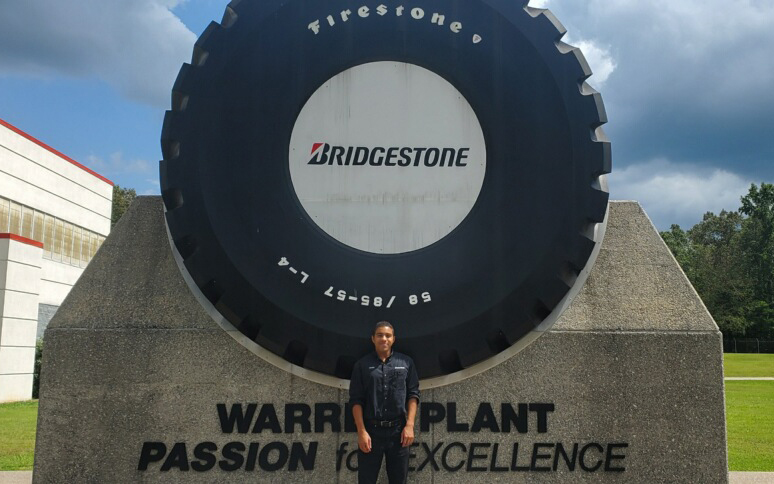By Isaac Vaughn (junior in electrical engineering).
When I was given the offer to do a co-op for Bridgestone, a Japanese multinational tire manufacturer, my main concern was if this work would be worth delaying my education. After 14 months experiencing electrical engineering, and a real multidisciplinary workforce, I can confidently affirm that this was a priceless opportunity.

Isaac Vaughn
My co-op experience began in summer 2019 in McMinnville, Tennessee, in what is known as a “flagship” plant, always producing and innovating as fast as possible. The training was concise yet helpful enough to get me to work quickly. I started out with the senior electrical engineer in the powerhouse. There, I finished programming logic to replace and upgrade steam valve control devices and design a human-machine interface display for operator use. From then on, the work took me all over the plant with different engineers and interacting with all departments of the factory. Jobs covered everything from monitoring large power systems, writing manuals, HMI design, and changing AutoCAD Electrical Drawings for system modifications to ethernet or serial networking communication, programming machine upgrades, safety circuits, electrical panel installation, and lots of troubleshooting in the field.
Only so much of the work could be done in the office. Half of my time was spent collaborating with production management, electricians, information technology, chemical, industrial, and mechanical engineers. Although, the most helpful information came from the maintenance and operator technicians for the machines. Talking with the people who keep the facility producing was invaluable and is necessary to engineer useful technology.
 The major project that I served on was a complete overhaul of how the plant transported tires. A mechanical engineering co-op student and I were tasked with automating a step of the tire assembly machine process that previously needed operator manual labor. While they worked on the design, parts, and drawings, I worked on implementing the driving motors, sensors, and the drastic program changes needed to safely and efficiently get the modification operational. The engineer I was working for was a constant mentor through this project, but he left plenty of room for failure.
The major project that I served on was a complete overhaul of how the plant transported tires. A mechanical engineering co-op student and I were tasked with automating a step of the tire assembly machine process that previously needed operator manual labor. While they worked on the design, parts, and drawings, I worked on implementing the driving motors, sensors, and the drastic program changes needed to safely and efficiently get the modification operational. The engineer I was working for was a constant mentor through this project, but he left plenty of room for failure.
I am thankful for the opportunities this co-op has provided me with—the opportunities to fail and get back up to try again. I was taught how to tune out the pressure, remove assumptions, and problem-solve from the beginning through to the end. When that robot moves or that logic controller starts communicating, the sense of accomplishment enforces the reason I want to be an engineer. I do not doubt that this experience has laid the foundation for a strong work ethic and efficient habits. I started this co-op without even knowing what a controls engineer did and I end it as a more confident student and hopefully a promising engineer.